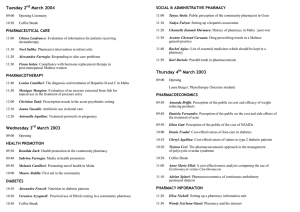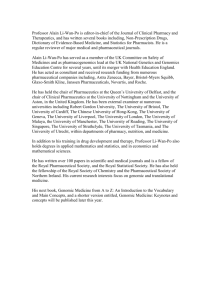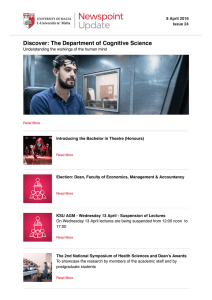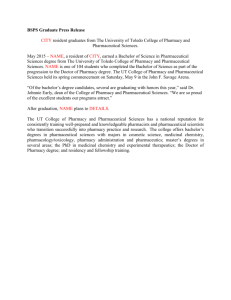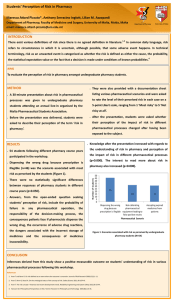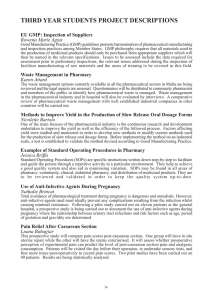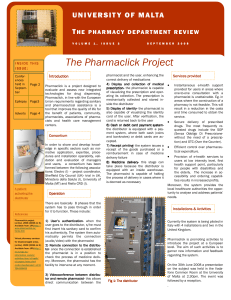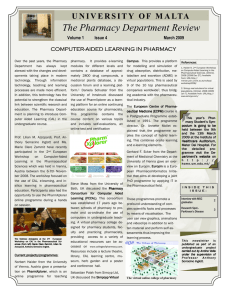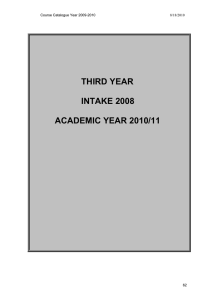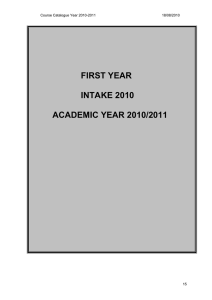DEVELOPMENT OF A NEW PHARMACEUTICAL ANALYSIS COURSE
advertisement
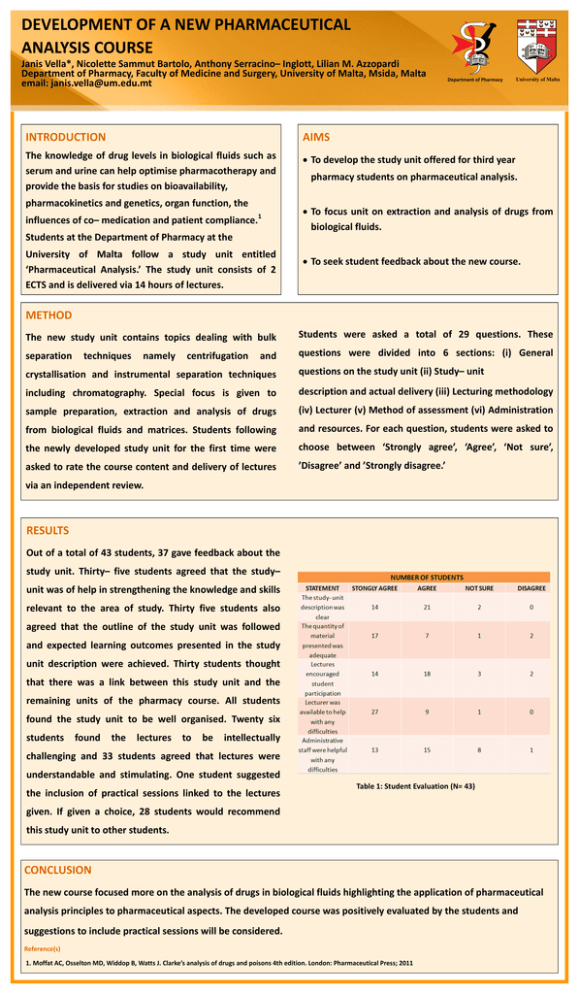
DEPARTMENT OF PHARM ACY UNIVERSI TY OF MA LTA DEVELOPMENT OF A NEW PHARMACEUTICAL ANALYSIS COURSE Janis Vella*, Nicolette Sammut Bartolo, Anthony Serracino– Inglott, Lilian M. Azzopardi Department of Pharmacy, Faculty of Medicine and Surgery, University of Malta, Msida, Malta email: janis.vella@um.edu.mt Department of Pharmacy INTRODUCTION AIMS The knowledge of drug levels in biological fluids such as serum and urine can help optimise pharmacotherapy and provide the basis for studies on bioavailability, To develop the study unit offered for third year pharmacokinetics and genetics, organ function, the influences of co– medication and patient compliance. 1 Students at the Department of Pharmacy at the University of Malta follow a study unit entitled ‘Pharmaceutical Analysis.’ The study unit consists of 2 ECTS and is delivered via 14 hours of lectures. University of Malta pharmacy students on pharmaceutical analysis. To focus unit on extraction and analysis of drugs from biological fluids. To seek student feedback about the new course. METHOD The new study unit contains topics dealing with bulk Students were asked a total of 29 questions. These separation questions were divided into 6 sections: (i) General techniques namely centrifugation and crystallisation and instrumental separation techniques questions on the study unit (ii) Study– unit including chromatography. Special focus is given to description and actual delivery (iii) Lecturing methodology sample preparation, extraction and analysis of drugs (iv) Lecturer (v) Method of assessment (vi) Administration from biological fluids and matrices. Students following and resources. For each question, students were asked to the newly developed study unit for the first time were choose between ‘Strongly agree’, ‘Agree’, ‘Not sure’, asked to rate the course content and delivery of lectures ’Disagree’ and ’Strongly disagree.’ via an independent review. RESULTS Out of a total of 43 students, 37 gave feedback about the study unit. Thirty– five students agreed that the study– unit was of help in strengthening the knowledge and skills relevant to the area of study. Thirty five students also agreed that the outline of the study unit was followed and expected learning outcomes presented in the study unit description were achieved. Thirty students thought that there was a link between this study unit and the remaining units of the pharmacy course. All students found the study unit to be well organised. Twenty six students found the lectures to be intellectually challenging and 33 students agreed that lectures were understandable and stimulating. One student suggested the inclusion of practical sessions linked to the lectures Table 1: Student Evaluation (N= 43) given. If given a choice, 28 students would recommend this study unit to other students. CONCLUSION The new course focused more on the analysis of drugs in biological fluids highlighting the application of pharmaceutical analysis principles to pharmaceutical aspects. The developed course was positively evaluated by the students and suggestions to include practical sessions will be considered. Reference(s) 1. Moffat AC, Osselton MD, Widdop B, Watts J. Clarke’s analysis of drugs and poisons 4th edition. London: Pharmaceutical Press; 2011
